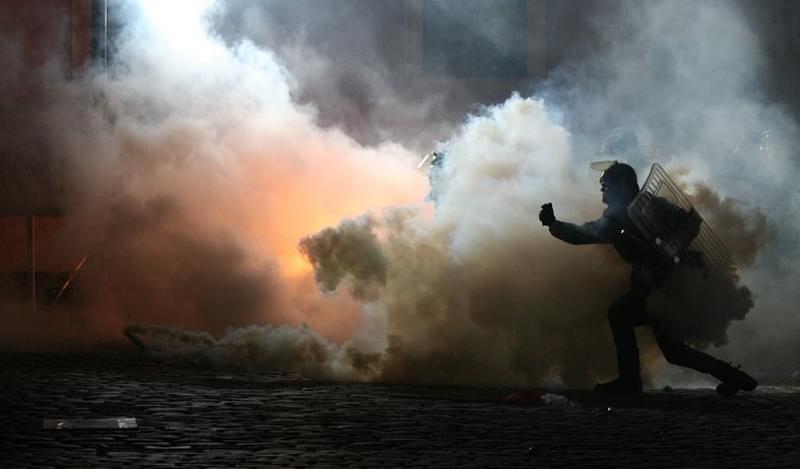Foreign investors and global political analysts cheered as they saw most of Latin America’s nations shake its populist addiction and elect a series of “market friendly” leaders.
However, as these leaders took upon themselves the task of enacting necessary but somewhat painful economic reforms, they have received strong opposition from unions and social movements.
On 24 August alone, protests were recorded in five different Latin American nations. Countries such as Peru, Argentina, Brazil, and Chile have in recent months been subject to large-scale strikes and protests from different sectors and segments of the population, often in direct response to new policies being enacted in those countries.
Earlier this year, Chile’s economy was badly hit by one of the country’s longest mining strikes in over 40 years. The 43-day strike at Minera Escondida, which itself accounts for 2% of the country’s GDP and a fifth of its copper output, shaved almost half a percentage point off Chile’s annual growth rate.
In Peru, the teacher’s and doctor’s unions have been creating chaos in Lima and further afield. In Cuzco, which is dominated by the tourism sector, protests have cost the city around USD1mn a day in clean-up and containment – and lost footfall. The city lost 3% of its non-mining GDP through the first half of 2017, according to local press.
This combined with the public outrage in the wake of the Odebrecht scandal, has prompted the popularity of centre-right president Pedro Pablo Kuczynski, who was elected on the promise of fighting corruption and bolstering the economy, to plunge to its lowest levels since he was elected over a year ago. Only 29% of Peruvians approve of his administration.
Argentina is a nation used to protests. Unions there hold an almost incomparable level power, and are known for their abilities to take down presidents. This why, as soon he took office, among the first things centre-right president Mauricio Macri did was to arrange a pact with the unions. This strategy proved successful until it was broken in April, when the unions called for a national strike that ended up costing the Argentine economy an estimated USD15bn.
Strike and protest are recurring themes in Brazil, though less frequent since Michel Temer took office following the impeachment of former socialist President Dilma Rousseff. But, the fragile economic recovery coupled with the harsh austerity measures imposed by Temer have fuelled the public’s discontent, and could spark a new wave of anti-government demonstrations.
Can the Strikes Jeopardize Reforms?
Some analysts have grown weary about an acceleration of large-scale industrial action and question whether it can derail current reform efforts, while others continue to raise red flags over lost productivity and economic drag caused by unceasing demonstrations.
For Martin Castellano Deputy Chief Economist, Latin America Department at Institute of International Finance(IIF), political issues have provided fertile ground for the recent escalation in industrial action across the region.
“In the case of Brazil, the main driver has been a combination of political turmoil amid the still unfolding corruption probe, and a lifeless recovery from a long and deep recession, featuring high unemployment. “
“In Peru, social tension has been an underlying factor for long as “the street” became a powerful mechanism to shape the policy agenda. More recently, a weaker economy and political woes have exacerbated the protests. “
“Argentina has shifted away from populist policies, which implied painful policy corrections and reforms that eroded the power of minority vested interests. Protests from sectors benefiting from the status quo are likely to escalate, but I believe the government is well positioned to overcome them and move forward, benefiting from strengthening growth and declining inflation,” the economist concluded.
The impact of industrial action comes at a very delicate time for the region; after the slump in commodities prices, many countries are just starting to come out of recession, and some – like Chile – are re-entering.
The region has benefitted from a prolonged rally in EM assets, which has seen foreign investors invest heavily in the region, due in large part to the low yield environment persisting in the developed world. Nevertheless, investors are paying very close attention to both the broader macroprudential policies promised by governments and increasingly, to the political climate in general.
“While industrial action could reduce the political scope to introduce reforms, this could lead to a more gradual or watered-down implementation rather than prevent reforms from happening,” Castellano argued.
In Brazil, for example, members of Congress have confirmed they would move forward with controversial and heavily contested labour reforms, even if Michel Temer is no longer president; but most analysts who spoke with Bonds & Loans believe the likelihood of those reforms being watered down without Temer at the helm is far greater.
As these governments continue to mull unpopular but necessary reforms, we can and should expect industrial action to continue. It will be up to governments to learn from their predecessors and continue moving forward if they seek to foster reliable business environments or attractive investment destinations. Countries like Peru, Argentina, Chile and Brazil simply can’t afford the economic drag large-scale protests create.









